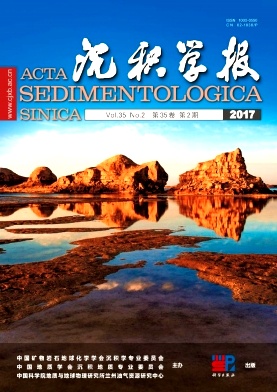Characteristics of Deep-marine Sedimentation and Evidence on Evolution of the Paleo-oceanographic Chemistry Conditions across the Permian-Triassic Boundary: A case study on the Zhijin profile in the Guizhou province
doi: 10.14027/j.cnki.cjxb.2017.02.002
- Received Date: 2016-09-30
- Rev Recd Date: 2016-11-30
- Publish Date: 2017-04-10
-
Key words:
- Permian-Triassic boundary /
- deep-marine sedimentary /
- paleooceanographic chemistry condition /
- carbonate microfacies /
- Zhijin profile
Abstract: Two types of carbonate sedimentary facies, two types of subfacies, and five types of carbonate microfacies are identified based on rock thin section identification and fossil identification from the Permian-Triassic boundary at Zhijin profile of Guizhou province. The values of δ13Corg turn negative from -27.7‰ to -28.3‰ from the later Permian to the early Triassic period, reflecting the change of organic matter types from higher plant to lower microbes. The values of δ13Crock present increasing from -24.2‰ to -20.9‰ in the late Permian period and into the early Triassic period, reflecting a mass extinction event in the late Permian. This resulted in the disappearance of marine organisms and the intensive enrichment of 12C in the ocean. Mixed organic matter is not neglected in the testing process. The values of Fe-HR/Fe-T, Fepy/Fe-HR, V/(V+Ni) and V/(V+Cr) distributed at the boundary of the Permian and Triassic indicate that the paleooceanographic chemistry condition at the end of the Permian was oxidation and weak reduction environment. These values also reveal that the paleooceanographic chemistry condition at the early of Triassic was reduction and iron environment, and there was no sulfide environment within the basin. The ratio of V/Ni increases from 0.97~1.97 (in the upper of Permian) to 1.67~7.33 (in the lower of Triassic), which shows a deeper process of seawater. This conclusion coincides with the result of carbonate microfacies evolution. From the view of biogenic evolution, biotic assemblages change from the type of foraminifera-algal-trilobite in the Late Permian to the type of small scale of shelly and microbial assemblage zones in the Early Triassic, which indicate two ceremonies of extinction and organic evolution model in the late of Permian and early of Triassic in the southern China.
| Citation: | WANG ChaoYong, BAO Yuan, KONG FanFan. Characteristics of Deep-marine Sedimentation and Evidence on Evolution of the Paleo-oceanographic Chemistry Conditions across the Permian-Triassic Boundary: A case study on the Zhijin profile in the Guizhou province[J]. Acta Sedimentologica Sinica, 2017, 35(2): 217-227. doi: 10.14027/j.cnki.cjxb.2017.02.002 |






 DownLoad:
DownLoad: